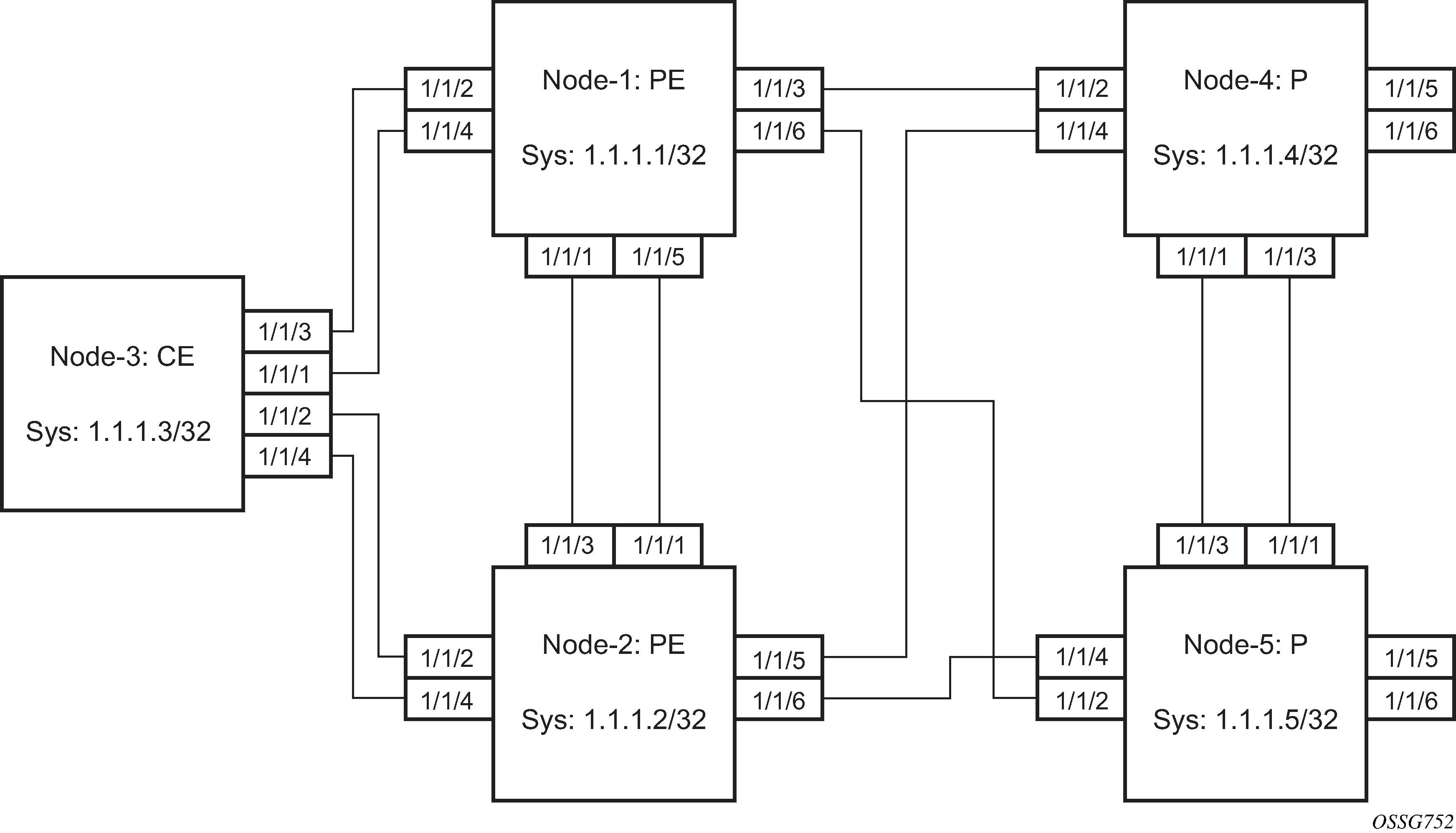A multi-homed site can be configured on up to four PEs although two PEs are enough for most applications, with each PE having a single object SAP connecting to the multi-homed site. SR OS G.8031 implementation with load sharing allows multiple PEs as well. The designated forwarder election chooses a single connection to be operationally up, with the other placed in standby. Only revertive behavior is supported.
Fate sharing (the status of one site can be inherited from another site) is achievable using monitor-groups.
The following are supported:
All Ethernet-tunnel G.8031 SAPs on CE:
7750 SR, 7450 ESS, or 7950 XRS G.8031 in load sharing mode (recommended)
7750 SR, 7450 ESS, or 7950 XRS G.8031 in non-load sharing mode
Epipe and endpoint with SAPs on PE devices.
Endpoints with PW.
Endpoints with active/standby PWs.
There are the following constraints with this feature:
Not supported with PBB Epipes.
Spoke SDP (pseudowire).
BGP signaling is not supported.
Cannot use BGP MH for auto-discovered pseudowire. This is achieved in a VPLS service using SHGs, which are not available in Epipes.
Other multi-chassis redundancy features are not supported on the multi-homed site object, as follows:
MC-LAG
MC-EP
MC-Ring
MC-APS
Master and slave pseudowire is not supported.
Figure 1. Example Topology Full Redundancy
See the following Configuration Examples for configuration examples derived from Figure 1.